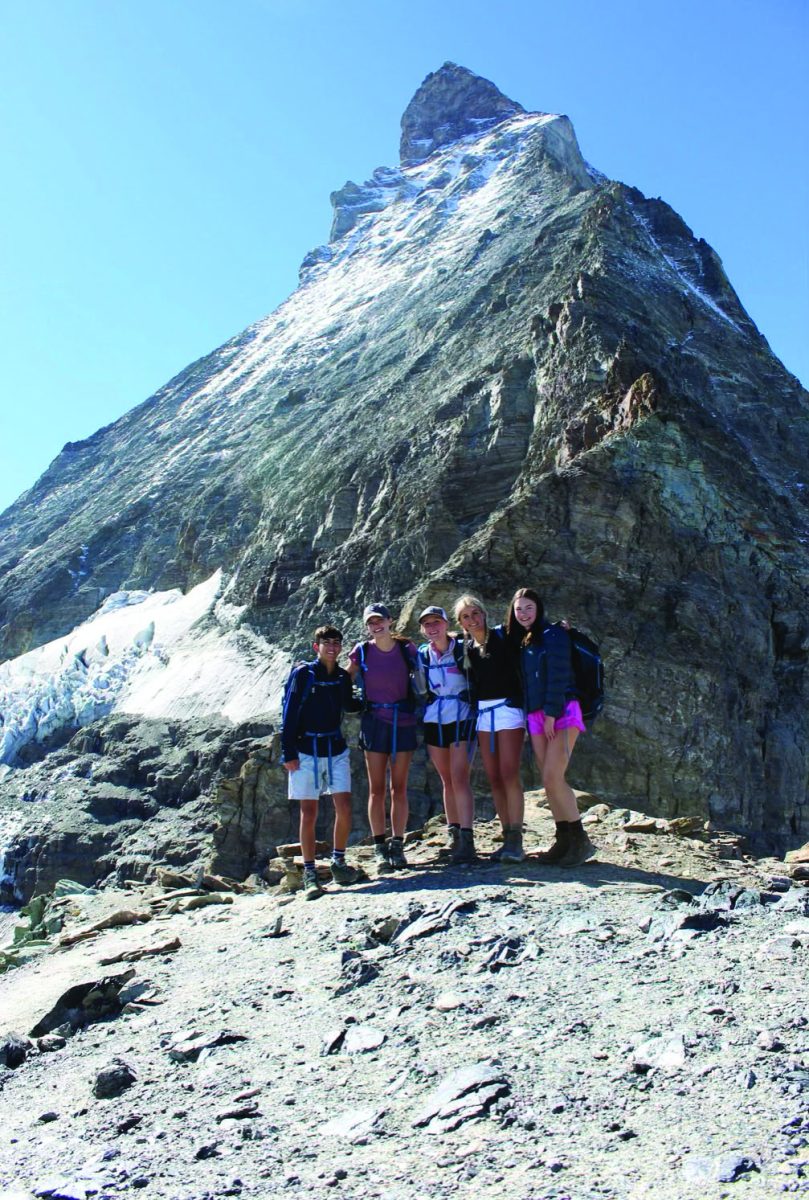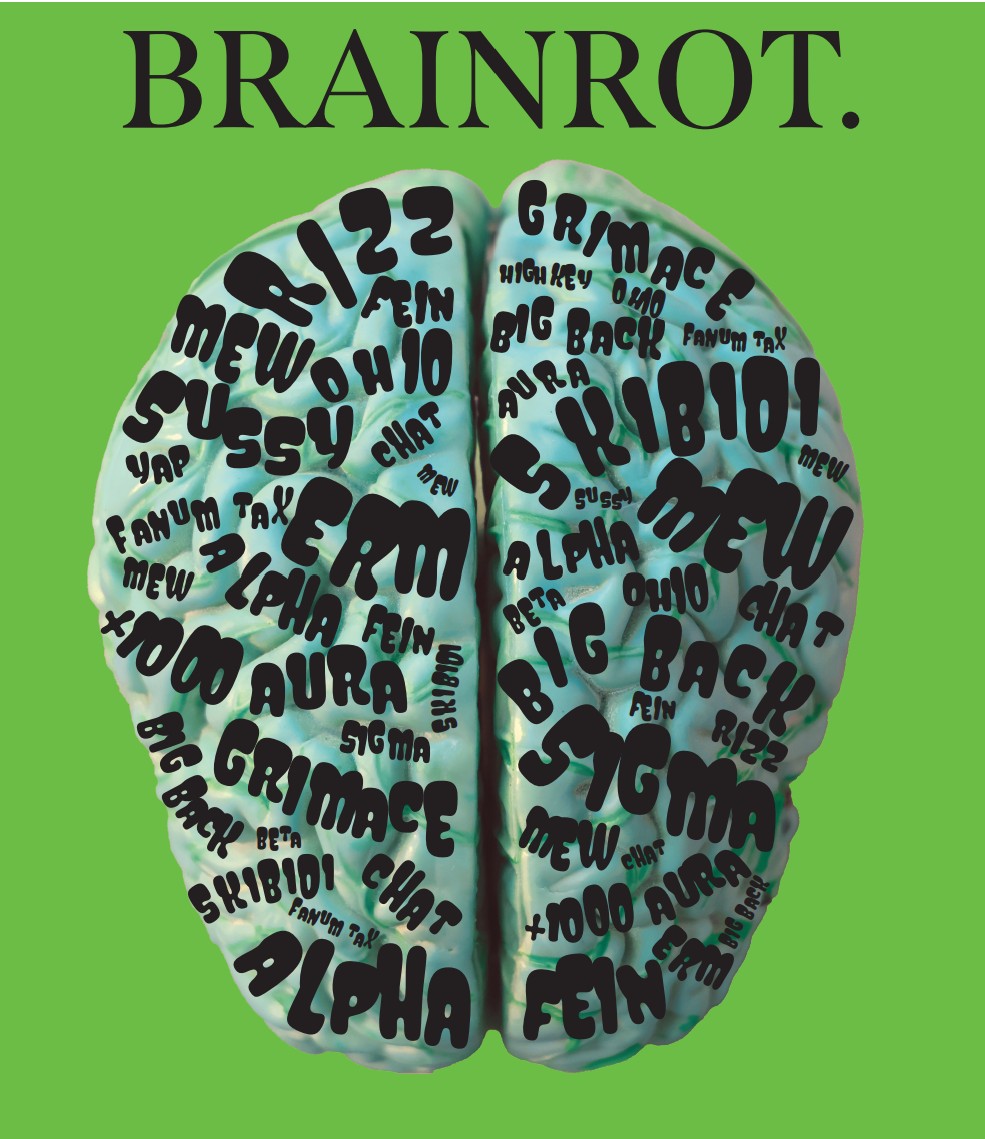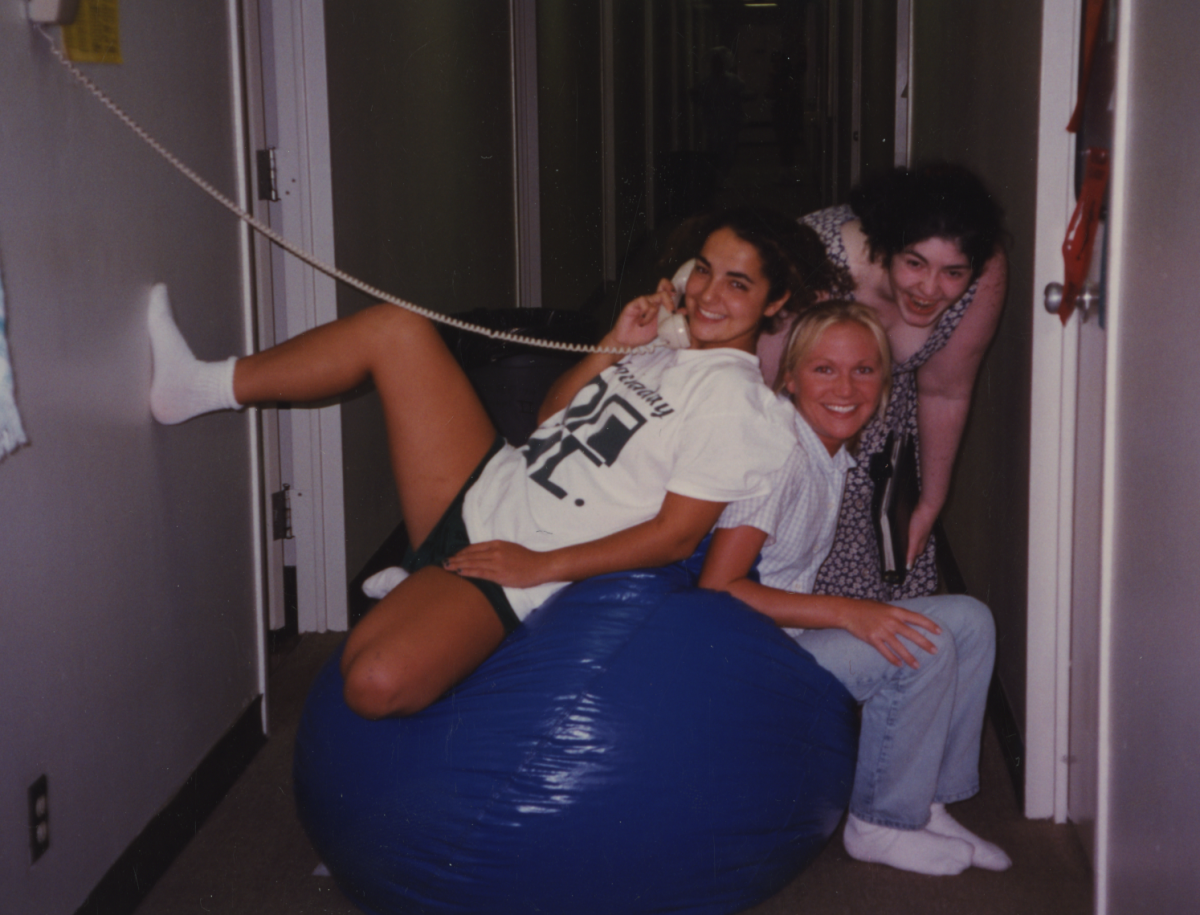The Rise of the Unaffiliated American
Ask any citizen to recite the Pledge of Allegiance, and the eighth to last word they’ll say is “God.” Ask another for a one-dollar bill and on it, “In God We Trust” will be written in large, green capital letters across the top.

The idea of “God” has been ingrained into the politics and culture of America since the country’s Quaker, Puritan and Protestant beginnings, and many Americans believe that there it should stay. But ask one of the 46 million citizens who identify with no religion, and they’ll tell you differently.
“[The phrase “In God We Trust”] is basically a generic recognition of God and suggests that it’s traditional that every American should have at least some belief in a creator God. And I don’t think that’s right or true,” National Atheist Party President Troy Boyle said.
For the first time in the history of the United States, this irreligious demographic has now become large enough to make a real change in the religious makeup of the country.
In a study conducted by the Pew Forum on Religion & Public Life, a project of the Pew Research Center (“a nonpartisan fact tank that provides information on the issues, attitudes and trends shaping America and the world”) this year, researchers found that one in five Americans does not affiliate himself with an organized religion. These numbers show a significant five percent jump from 2007 and an even larger 13 percent increase from 1972.
Pew Research Center associate Jessica Hamar Martinez said that the numbers resulted from a culmination of two separate studies conducted this summer, the first being a survey taken for a “representative sample of the population.”
“We took all of the surveys that we’ve done from 2007 through July of this year, and we amassed all of that data so that we could have large enough numbers from one year to the next to examine the unaffiliated population,” Martinez said.
The second part of the report comes from publicly available “general social surveys” conducted each year by the Pew Forum since 1972, all in all creating a highly extensive report of religious affiliation in the country, allowing the researchers to see the changes from decades ago.
While Martinez and other researchers cannot say for certain which factors contributed most to these changes, some results suggest a more widespread tolerance of beliefs not seen before in past decades.
“We saw that people who generally don’t attend religious services [are] more likely to say that they do not affiliate themselves with any religion,” Martinez said. “It could just be that they are becoming more comfortable with saying they’re not affiliated with a particular religion. It’s not necessarily that people are becoming less religious, but that they are less likely to say that they are with a particular religious group.”
This growing number of unaffiliated Americans could also be attributed to the amount of different belief systems placed under one term, increasing the number of people who fall under the “none” category. In this particular survey, all atheists, agnostics, “nones” and those in between fall into the “unaffiliated” group.
This may have caused the numbers to grow rather rapidly, considering that often the terms or labels for non-affiliation get confusing.
“It’s totally based on self-identification…We offer the terms, but we don’t define them,” Martinez said. “It is possible that people don’t have the same understanding of those terms as other respondents, but we base it on what they tell us.”
However, the breakdown of these separate and very different groups offers more insight into the religious makeup of the country.
“If you are talking specifically how many people are atheists or agnostics, that number is probably in the mid-single digits, like four or five percent,” said Hemant Mehta, independent atheist blogger and author. “But if you go to people who are not religious, that number jumps up dramatically.”
The Pew study found that approximately nine million Americans declare themselves “atheists,” meaning they hold no belief in any sort of God, as opposed to the majority of the Americans who answered “none” and still believe in a higher power.
To accompany these new numbers of increased unaffiliation, the Pew study also showed a 73 to 60 percent drop in religiousness. While these new numbers may seem drastic, America is, in reality, one of the last countries to catch on to a growing international movement toward religious unaffiliation.
Fifty-eight percent of Americans still identify religion as a very important aspect of their lives, which is double that of most European countries according to the Pew Global Attitudes Project, which conducts international polling.
Professor Martin E. Marty of the Divinity School at the University of Chicago attributes this American “religious intensity” to mostly history rather than culture.
“America is among the more religious countries of the world in part because of religious freedom and the absence of a legally established church. Religious groups have to hustle to gain and hold members, to offer much, to lure people, to satisfy them,” Marty said. “In nations where religion is established (as it was in Europe), everyone can be relaxed and non-hustling, so yields and loyalties are low.”
To many atheists like Mehta and other religiously unaffiliated individuals, the most shocking aspect of this budding population is the quick nature of its growth. In less than five years, the number of unaffiliated Americans has grown by five percentage points, and no movement can grow this rapidly without burgeoning culture.
Since the publication of Sam Harris’s book “The End of Faith” in 2004, the atheist and “none” culture has exploded with publications, speeches and even more books criticizing dogma and faith.
“When I was in High School, 10 or 11 years ago, there were not sections in Barnes & Noble dedicated to atheism. Now there are. There wasn’t a huge atheist book selection online. Now there is. There weren’t blogs, and now there are,” Mehta said.
For the first time in the early 2000s, unaffiliated individuals yearning to explore their options could find information on “none” beliefs through books. And suddenly, the authors of these new “atheist bibles” soon became the “rockstars” that all atheists, agnostics, and “nones” rally around today, the most notable being Richard Dawkins and Christopher Hitchens.
Dawkins, a biologist at the University of Oxford, wrote “The God Delusion,” offering a thorough argument for atheism. Similarly, Hitchens wrote “God Is Not Great,” a critique of organized religion and faith. Both books are considered the most influential and popular of the “atheist bibles” mentioned earlier.
“People look for leadership, and it is a normal thing to look around and see who is talking about it: ‘what are they saying and do I agree with it?’” Boyle said. “And 30, 40, 50 years ago we didn’t really have outspoken advocates the way we do now.”
Mehta even compares the unaffiliated groups to the gay community in the way that celebrities have helped aid their cause, explaining that “when celebrities come out, it helps make you realize that it is okay to be an atheist” or any individual who chooses not to identify with an organized religion.
Celebrities like Ricky Gervais, Bill Gates, Daniel Radcliffe, Brad Pitt, Keira Knightley and Bill Maher all fall under the unaffiliated category as atheists and agnostics. Famous figures such as them have helped communicate that it is okay to “come out,” as Boyle and Mehta put it.
But Mehta still gives most of the credit to technology, not people. To him, the Internet “single-handedly” caused the rising popularity of this rather new population. Mehta demonstrates the magnitude of this development through the example that a person “can basically now fact-check [their pastor] on [their] phone while sitting in church.”
“I think the biggest change that has happened is that you realize that you’re not alone,” Mehta said. “And before the Internet, it was very hard to find other people that didn’t believe in God in your community or people that you could connect with without the Internet.”
Boyle said he believes in more of a combination of the two, suggesting that the celebrities have aided the Internet and vice versa.
“We have very prominent people again because of the Internet. Their opinions are accessible to everyone immediately in a way that they weren’t before,” Boyle said. “You go on YouTube, and you can watch a speech from Richard Dawkins; you can watch a video from me or the National Atheist Party; you can watch a debate with Sam Harris.”
As a teenager and an agnostic, junior Kellen said she believes this has also been particularly instrumental in the growing number of young unaffiliated Americans.
“I feel like it’s part of being connected to other places from such a young age. The Internet has been around my entire life, and I’ve never experienced the world without it,” Kellen said. “Our generation has been more connected and in that, you tend to see other people’s perspectives a little bit more.”
Certainly, the “none” culture, the atheist leaders and the Internet have all contributed. However, there is some notion that this population is a result of organized religions failing to keep up with the societal changes of the day.
“I think it’s because traditional religions are not keeping pace with progressive social issues, like abortion, same-sex marriage, legalization of marijuana. Traditional religions are very slow to change,” Boyle said.
However, Chinese teacher Dr. Justin Rudelson, who practices Judaism, sees it differently. To him, most believers understand that they may not agree with everything their religion might require of them.
“A congregation is like a family. Every week there might be something that bothers me a little bit, but the rest of the experience is so fantastic that I attend services every week anyways,” Rudelson said. “You don’t leave your family if your uncle says an offhand comment. I think a lot of people find it easier to give up on religion because of a particular issue rather than struggle with the demands of being part of a faith-based community.”
Regardless, these unaffiliated individuals have unaligned in search of lifestyles more in sync with their personal views. And for those 46 million Americans, the “none” culture fills that void.
When looking at the wide variety of people who make up this group of 46 million, it’s easily assumed that this is a far-reaching movement that resonates with all types of Americans.
Though many may believe that this switch to being religiously unaffiliated is prevalent in certain groups, such as liberals or the youth, Pew actually found that this change can be found in all demographics, except when it comes to different races and ethnicities.
“The rise is very much across the board, except for maybe when it comes to race. Among whites in particular, we see this incline in the religiously unaffiliated, but not necessarily in minorities,” Martinez said. “But other than that…it’s a phenomenon that’s shared by most of the country.”
However, the biggest increases are in the 18-30 age demographic, which now rests at around 32 percent unaffiliated. “Generally speaking over time, younger people tend to be less likely to be affiliated. However, this current generation is less affiliated than older generations were when they were in this age bracket.”
This pattern is common in other controversial issues, Martinez said, in what she calls “generational replacement.”
“As the younger cohorts are coming of age and replacing older cohorts, the raw percentage of people who are affiliated with religion is going down.”
Junior Channing attests to this and believes that, oftentimes, younger generations are “more critical of the older” ones when it comes to their elders’ more traditional views.
“Any sort of heavy adherence to religious values, especially in regards to government, is really not looked well upon by our generation because we are quite a bit more open-minded,” she said.
The second group in which these irreligious individuals dominate is the Democratic Party and the liberal population. This also means that these religiously unaffiliated Americans are more progressive, more gay-friendly, as well as more pro-choice compared to their fellow citizens.
Together, they comprise 25 percent of registered voters who are Democrats or lean democratic.
This matters when it comes to elections. In the 2008 presidential race, 75 percent of this unaffiliated population voted for President Barack Obama.
Out of any demographic, “they are one of the largest groups that lean most Democratic when it comes to religious groups and their partisanship,” Martinez said.
In addition to being mostly Democratic, Caucasian and young, it’s a group that is highly educated.
“If you go down the line of who has the most education if you measure it by degrees, as you go down that line to a Ph.D., the number of people who don’t believe in God goes higher and higher,” Mehta said.
He added that this is not to say that believers are unintelligent, but that the trends suggest that people who have accomplished higher levels of formal education tend to be less religious.
As Martinez stressed earlier, though it influences some more than others, the trend of religious unaffiation is a sweeping change that affects all groups. The Pew study found increases in every single demographic regarding age, marital status, region, socioeconomic status, gender and education. Not one showed a decrease from 2007.
For a country that has remained mostly Protestant for the entirety of its history, this could mean momentous changes to the fabric, culture and politics of America.
“I think we’ve already seen what effect that has on the country because 76 percent of the polled ‘religiously unaffiliated’ voted for Obama in the re-election campaign, so I think we’re very influential as a voting bloc,” Boyle said.
While it is easy to predict the political effects of this group, seeing as most relate to the Democratic Party, Boyle said he believes that “as a consequence for the country, when it comes to religion, that’s harder to say.”
However, Mehta said he predicts that the country will be more secular, but not anywhere near atheistic. Politicians will move away from hyper-religiousness in the future, but will still keep “God” as part of the country’s overall religious identity.
Martinez agreed with this based on the fact that most of these individuals still believe in a higher power and do not hold the belief that there is no deity.
“While they are less likely to affiliate with a particular group, many of them are still religious in various ways, so it is not an entirely secular group. Many of them believe in God or universal spirits for example,” Martinez said. “So as far as what consequences this group will have for religion in the U.S., that’s a little bit harder to speak to.”
In Mehta’s opinion, the U.S. has changed the demographics many times before. He believes that the question is “what is your foundation in?” This question could result in a divide between those who believe in the Protestant beginnings and those who believe in the constitutional foundation.
“I think the other side would say our foundation has something to do with what the Bible says. And that is not going to go well when you have a country that is at least half not Protestant,” Mehta said. “Protestants are now in the minority. That doesn’t look like that is changing anytime soon. So what do you lead by? Do you lead by the Constitution or do you lead by the religious documents?”
When it comes to policies and legislation, decisions are based on the U.S. Constitution and other important papers. But often, the beliefs behind the documents are fueled by religious beliefs. Whether their effects can still influence America in this new era is yet to be seen.
“I would be happier if [religion] had less of an influence going forward, but I think its immediate effects will not be apparent,” Channing said. “It will have to be when our generation, or even a few generations ahead of us, finally cycles into power. It’s always really hard to break away from the way things are.”
Here at Hockaday, 18 percent of the students surveyed identified with atheism, agnosticism or no religion, together forming the unaffiliated population in the student body. Pew found that the national unaffiliated group made up precisely 18.6 percent of the country.
The statistics are uncannily close, but the teachers and students believe that the situation at school is very different from the rest of the country.
Rudelson said that this difference might arise from students’ young age and lack of experience in life, having worked and interacted in the same sort of school community for their whole lives.
“It’s such a phenomenal experience to be connected with people from all different ages and backgrounds. I don’t think students realize this until they start their professional lives,” Rudelson said. “First of all, once students leave college, it takes effort to be a part of diverse communities or even have friends of diverse backgrounds.”
The difficulty comes from the fact a person may not always have a community to partake in.
However, this is different for students, who are still living under their parents’ roofs and going to school. Already belonging to many different communities, high school and college students may not feel the need to join another as of now. Later in life, Rudelson said he thinks that unaffiliation can be potentially “alienating” for many people who need that sense of belonging.
“It was more a sense of feeling that unaffiliation was a dead end,” he said. “You can have friends and go out and do stuff, but if you want a meaningful sense of community, it’s really about joining a religion or an organization where others are devoted to a cause greater than yourself.”
In addition, beliefs change throughout life, and what one thinks in high school is likely to change. Or, as junior Nicole suggests, views may not even be developed at this point.
In the Upper School, “I think it’s more that people are just starting to realize it. I feel like people don’t really change their views. They might have not known them just yet. I do see a pretty good number of people devoted to their religion, and it’s a very respectable thing,” Nicole said, but she adds that while some clearly know, others do not.
Although there may be differences between the two groups (affiliated and unaffiliated), some students and experts believe constructive, educational experiences can arise from conversations between the two.
“I think it’s really just a matter of being candid and listening to what other people are saying,” Channing said. “To talk about it, there needs to be a comfortable atmosphere to encourage that.”
And experts like Boyle agree. Real change and real tolerance in a changing world will help make this a smoother transition for everyone.
Boyle thinks, “It’s a national discussion…that kind of polarization is necessary before a change.”
-Katie












